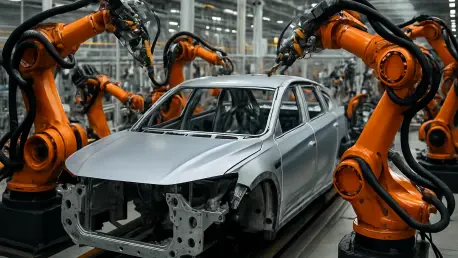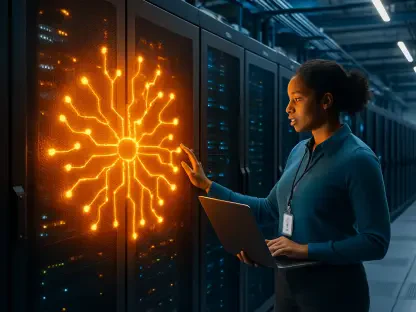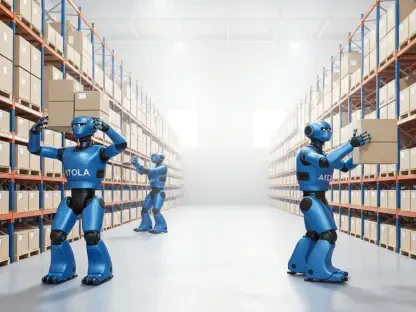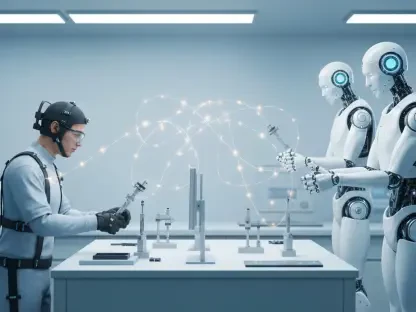Imagine a factory floor where the hum of robotic arms drowns out the clatter of human tools, where precision machines assemble vehicles at speeds no human hand could match, and this is no longer a vision of tomorrow but the reality of today’s automotive industry. As automation reshapes one of America’s most iconic sectors, robots are taking on tasks from welding to final assembly, driving a profound transformation that impacts efficiency, costs, and, most critically, the workforce. This analysis delves into the evolving dynamics of automation in auto manufacturing, exploring key trends, data-driven insights, and projections for the future. The purpose is to uncover how autoworkers are adapting to this technological wave and what it means for stakeholders across the industry, from manufacturers to policymakers, as they navigate a landscape defined by innovation and uncertainty.
Market Trends: The Surge of Robotics in Auto Production
The automotive industry is experiencing an unprecedented surge in automation, driven by the need to enhance efficiency and remain competitive in a global market. Major players like General Motors, Ford, and Hyundai are integrating robots into nearly every stage of production, from shaping raw materials to intricate assembly processes. Data from industry reports indicate an 11% increase in robot installations in the U.S. last year, with nearly 9,000 units purchased by automakers in the first half of the current year. This trend reflects a strategic shift toward reducing labor costs, which in the U.S. are often five to seven times higher than in competing regions, while also improving safety and product quality through precision technology.
Beyond sheer numbers, the sophistication of robotic systems is advancing rapidly. Innovations such as collaborative robot arms, often called cobots, and AI-driven machinery are enabling safer and more flexible interactions between humans and machines. These technologies allow robots to operate in unstructured environments without extensive safety barriers, a significant leap from traditional industrial robots. For instance, Ford’s revamped Louisville Assembly Plant, designed for electric vehicle production, showcases this progress with AI-guided robots that streamline operations, requiring 40% fewer workstations compared to older setups. This illustrates a broader market movement toward smarter, more adaptive automation solutions.
The push for automation also ties into larger economic imperatives, including the reshoring of manufacturing to the U.S. amid shifting trade policies. Higher tariffs on materials like steel and aluminum have sparked discussions about building more automated facilities domestically to offset labor expenses. While short-term policy uncertainty has slowed some investments, the long-term trajectory points to sustained growth in robotic adoption, positioning automation as a cornerstone of modern auto manufacturing strategies across the sector.
Workforce Impact: Balancing Displacement with Opportunity
Automation’s rise brings with it a stark reality for the workforce: significant job displacement. A recent survey by industry analysts predicts that 23% of auto manufacturing jobs could be automated within the next decade, a statistic that underscores the urgency for adaptation. Facilities like the aforementioned Louisville plant highlight this challenge, with 600 fewer workers needed due to streamlined robotic processes. The drive for efficiency and cost reduction, while beneficial for corporate bottom lines, poses a direct threat to traditional assembly roles, particularly in high-wage markets like the U.S.
Yet, this disruption also opens doors to new opportunities through retraining and upskilling. Many autoworkers are pivoting to roles that support automation, such as robot maintenance and programming, which are in growing demand. Company-sponsored apprenticeship programs and technical learning centers are becoming vital lifelines, equipping employees with skills to manage and service advanced machinery. These initiatives not only offer job security but also introduce variety and intellectual engagement into roles that were once repetitive, signaling a shift in the labor market toward skilled trades within the industry.
Regional dynamics further complicate this balance between displacement and opportunity. In the U.S., the high cost of labor accelerates automation compared to lower-wage countries, but economic policies and trade uncertainties can delay large-scale investments. Meanwhile, plants like Hyundai’s Georgia facility, which employs over 1,000 robots alongside 8,000 humans, demonstrate a hybrid model where technology and labor coexist. This suggests that while automation reduces certain roles, it does not entirely eliminate the need for human oversight, especially in complex tasks, shaping a market where adaptation strategies are as critical as technological advancements.
Future Projections: A Hybrid Model on the Horizon
Looking ahead, the automotive manufacturing market is poised for a hybrid future where human-robot collaboration becomes the norm rather than the exception. Emerging technologies, including humanoid robots and advanced sensor systems, are expected to further integrate machines into workflows, enhancing flexibility and safety. Analysts project a continued rise in robot sales, potentially accelerating if policy clarity around trade and tariffs emerges over the next few years, from 2025 to 2027. This momentum is already evident in the growing adoption of automation for electric vehicle production, which demands precision and efficiency that robots are uniquely positioned to deliver.
Economic factors will play a pivotal role in shaping this trajectory. The potential for reshoring manufacturing to the U.S. could drive further investments in automated facilities, as companies seek to mitigate high labor costs while navigating tariff impacts. However, the market remains cautious, with short-term hesitancy tempering aggressive expansion. Projections suggest that while full automation of auto plants is unlikely due to the complexity of certain tasks requiring human judgment, the synergy between robotic precision and human ingenuity will define the next phase of industry evolution.
Another critical projection involves the evolving skill requirements for the workforce. As automation creates demand for roles in programming, maintenance, and system oversight, the market will likely see a surge in educational partnerships between automakers and technical institutions. This trend points to a future where continuous learning becomes integral to employment in the sector, reshaping labor dynamics. The balance of automation and human input, supported by these upskilling efforts, will be a key determinant of how the market adapts to technological and economic shifts in the coming years.
Strategic Reflections and Pathways Forward
Reflecting on the analysis, it becomes evident that the automotive industry has reached a critical juncture where automation redefines efficiency, safety, and labor structures. The 11% rise in robot installations and the projected 23% job automation over the next decade underscore the scale of transformation, while stories of workforce retraining highlight resilience amid disruption. Economic and policy uncertainties have introduced complexities, yet the market’s trajectory toward a hybrid human-robot model offers a framework for balancing innovation with employment stability.
Looking beyond these findings, strategic pathways emerge for stakeholders to consider. Automakers could prioritize investments in collaborative technologies and comprehensive training programs to ensure workers are equipped for new roles, fostering a workforce that complements rather than competes with machines. Policymakers have the opportunity to provide clarity on trade policies and incentives for domestic manufacturing, potentially accelerating automation while safeguarding jobs through supportive measures. For autoworkers, seeking out upskilling opportunities through company initiatives or community colleges becomes a practical step to secure future-proof positions. These actionable insights, grounded in the evolving realities of the market, point toward a collaborative future where technology and human potential can thrive together, shaping an industry ready for the challenges and opportunities ahead.









